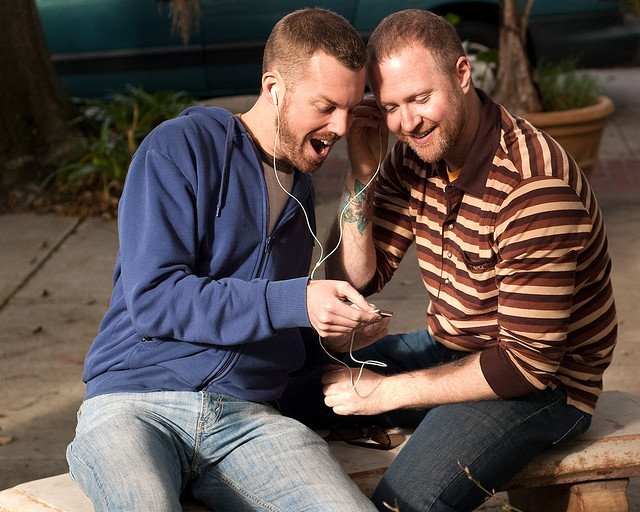Contents
The following information is summarised from the published work of Dr. David P. McWhirter, MD and Dr. Andrew M. Mattison, MSW, PhD (professional & personal partners, sadly now both deceased).
- Book: “A Guide to Psychotherapy with Gay and Lesbian Clients” (Ed. Gonziorek (1982), chapter: “Psychotherapy for Gay Male Couples”).
- Original Publication: “The Male Couple” (McWhirter & Mattison (1984), Published: Prentice Hall 0-13-547661-5).
Growth in Gay Male Couple Relationships
Over a 5-year period (1974 to 1979), David P. McWhirter, MD and Andrew M. Mattison MSW, PhD interviewed 156 gay male couples (in the California, San Diego County area) in depth about their significant / intimate couple relationship. The couples interviewed were not in therapy and had been living together as male to male partners anywhere from 1 to more than 37 years. The mean time in a relationship was 8.7 years, with median being slightly over 5 years.
The study documents how these relationships between two men have developed and have been sustained.
From the interview data, McWhirter and Mattison identified: Six Developmental Stages Of Relationship between gay male couples (with the first four stages occurring within the first 10 years of the couple’s relationship).
These developmental stages of gay couples were originally presented as tentative formulations needing further clinical trial and research validation. The stages are categorised after the break…
IMPORTANT!
Counselling for Gay Couples.
When your most precious relationship is in distress, LGBT Couple Counselling – focusing on gay relationships – can help you… together. Get in contact today.
- Stage 1: Blending
- Stage 2: Nesting
- Stage 3: Maintaining
- Stage 4: Collaborating
- Stage 5: Trusting
- Stage 6: Repartnering
Clinical approaches to therapy with gay male couples benefit from conceptualisations of developmental stages. They may also help gay men in intimate relationships identify (for themselves) aspects of their relationship that they may (or may not) wish to address.
Blending (Stage 1)
Relationship Period: First Year.
Characteristics:
- Blending
- Limerence (falling in love, being romantically in love, intrusive thinking about the desired person, acute longing for reciprocation, sexual attraction).
- Equality of partnership
- High sexual activity
Blending is experienced as the intensity of togetherness gay men feel early in their relationships. Their similarities bind them, their differences are mutually overlooked.
Nesting (Stage 2)
Relationship Period: years 1 to 3.
Characteristics:
- Homemaking
- Finding compatibility
- Decline in limerence
- Ambivalence
By the second year, the couple has become more aware of their surroundings. Homemaking activities increase. Couples in this stage may also see each other’s flaws more than before, and they may discover or create complementarities that improve compatibility. There’s a focus on setting the stage for ambivalence: a mix of positive and negative feelings about the value of their relationship.
Maintaining (Stage 3)
Relationship Period: years 3 to 5.
Characteristics:
- Individualisation begins
- Risk-taking
- Dealing with Conflict
- Relying on the relationship
Individualisation and togetherness, conflict and its resolution, autonomy and dependence, confusion and understanding all play a role in how the couple maintains their relationship. Stage Two’s intense blending clears the way for individual differences to re-emergence (referred to here as individualisation). Individualisation invites some calculated risk-taking.
Collaborating (Stage 4)
Relationship Period: years 5 to 10.
Characteristics:
- Collaborating
- Productivity
- Establishing independence
- Dependability of partners
After 5 years of being together, the couple may feel a new sense of security and a lessened need to process their interactions. Stage Three individualisation can lead to the establishment of independence, which is supported by the consistent, dependable availability of a partner for support, guidance, and affirmation.
Trusting (Stage 5)
Relationship Period: years 10 to 20.
Characteristics:
- Trust
- Merger of money and possessions
- Constriction
- Taking the relationship for granted
Trust develops gradually for most couples. The trust of Stage Five includes a mutual lack of possessiveness and a stronger positive regard for each other.
Repartnering (Stage 6)
Relationship Period: years 20 and beyond.
Characteristics:
- Attainment of goals
- Expectation of permanence of the relationship
- Emergence of personal concerns
- Awareness of the passage of time
The twentieth anniversary appears to be a special milestone for gay male couples. A surprising number of couples reported a renewal of their relationship after being together for 20 years or more.
Comparing Couple Development Studies
(A comment from Dean Richardson MNCPS (Accred/Reg))
During my postgraduate studies in Integrated Psychodynamic / Systemic Couple Counselling, our class was introduced to couple developmental stages from E. Street’s “Marital Stages” study (on heterosexual relationships).
Additionally, in 2013 Kathryn Macapagal et al published: “Relationship Stages and Processes Among Young LGBT Couples” (National Library of Medicine: https://www.ncbi.nlm.nih.gov/pmc/articles/PMC4644068/) which is an interesting study.
When I compare Street’s & Macapagal’s discoveries with “Gay Male Partnership Stages” by McWhirter & Mattison, i begin to see interesting correlations:-
McWhirter & Mattison:
|
Macapagal:
|
|
Street:
|
|
| Blending | { | Discernment | } | Romance |
| { | Initiation | } | ||
| { | Negotiation | } | ||
| Nesting | Cohabitation | Reality | ||
| Maintaining | } | Commitment | { | Power Struggles |
| Collaborating | } | { | Finding Oneself | |
| Trusting | } | { | Working through | |
| Repartnering | } | { | Mutuality |
Study Conclusion
Through study we find that gay male couples form as legitimate and well-defined intimate relationships as their heterosexual couple counterparts; showing development stages comparable and similar to each other.
This summary is intended to bring this knowledge to gay male couples who may be curious as to their own developmental stage when compared to other male couples.
It’s helpful information that’s also used by Dean Richardson MNCPS (Accred/Reg) when working with gay male couples.










0 Comments